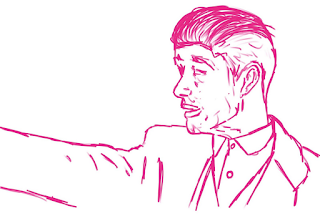La La Land Question
LA LA LAND QUESTION
Discuss how important cinematography is in establishing strong responses from spectators to a key character in 'La La Land'. Your answer must refer to 1 scene in detail.
In the end scene of La La Land the cinematography is used to create meaning towards Mia, and emotion within the audience, to build up a sympathetic view of the life she could of lived and the feelings she could of had with Sebastian and doing this in a way to force the audience connected with Mia to feel what she's feeling.

For example, the beginning shot of 'what could have been', were shown an eye level medium close-up of Mia centred in frame lasting exactly six seconds, surrounded by a pitch black background to draw the audience's attention onto Mias facial expressions of brokenness and curiosity. This is to create a bond between characters using cinematography, linking Mia and Sebastian as lovers and relating Mia to her passive audience who identified with her character. Damien Chazelle also used black for her dress as well as the background this clashes with the rest of his work during the film of bright and vibrant colours to show us how abruptly her emotions changed to dark and black. The eye level medium close-up is done to make the scene more intimate with it's audience and draw are attention to what Mias character is feeling. The eye level helps us identify with her further, especially during the upcoming moments. The lighting in this shot is low-key to focus us on the darkness however high-key on Mia to draw are attention to her character and make it so she's the only important element in frame, this is also show with the slow zoom in on her facial expression.

After this, we are approached with a close-up of Sebastian playing the piano which quickly turns into an over the shoulder shot of Mia looking at a medium long shot of Sebastian stood up, not only does the camera angle change in the same shot but the lighting turns from low-key to high-key in only a few seconds changing the mood and situation. It starts in the darkness with only a single spotlight highlighting what Mias focusing on putting us in her position relating us to her character. Once the cameras zoomed out to us being behind Mia, it really makes a passive audience feel apart of the movie as if there in Mias perspective, especially if the audience is identifying with Mias character at the time, which seems to be Damien Chazelles goal. The audio of the piano connects with the pace of the zoom out to create an atmosphere for the audience to live in whilst the high-key lighting sparks on revealing the positive area to the audience.
Discuss how important cinematography is in establishing strong responses from spectators to a key character in 'La La Land'. Your answer must refer to 1 scene in detail.
In the end scene of La La Land the cinematography is used to create meaning towards Mia, and emotion within the audience, to build up a sympathetic view of the life she could of lived and the feelings she could of had with Sebastian and doing this in a way to force the audience connected with Mia to feel what she's feeling.

For example, the beginning shot of 'what could have been', were shown an eye level medium close-up of Mia centred in frame lasting exactly six seconds, surrounded by a pitch black background to draw the audience's attention onto Mias facial expressions of brokenness and curiosity. This is to create a bond between characters using cinematography, linking Mia and Sebastian as lovers and relating Mia to her passive audience who identified with her character. Damien Chazelle also used black for her dress as well as the background this clashes with the rest of his work during the film of bright and vibrant colours to show us how abruptly her emotions changed to dark and black. The eye level medium close-up is done to make the scene more intimate with it's audience and draw are attention to what Mias character is feeling. The eye level helps us identify with her further, especially during the upcoming moments. The lighting in this shot is low-key to focus us on the darkness however high-key on Mia to draw are attention to her character and make it so she's the only important element in frame, this is also show with the slow zoom in on her facial expression.

After this, we are approached with a close-up of Sebastian playing the piano which quickly turns into an over the shoulder shot of Mia looking at a medium long shot of Sebastian stood up, not only does the camera angle change in the same shot but the lighting turns from low-key to high-key in only a few seconds changing the mood and situation. It starts in the darkness with only a single spotlight highlighting what Mias focusing on putting us in her position relating us to her character. Once the cameras zoomed out to us being behind Mia, it really makes a passive audience feel apart of the movie as if there in Mias perspective, especially if the audience is identifying with Mias character at the time, which seems to be Damien Chazelles goal. The audio of the piano connects with the pace of the zoom out to create an atmosphere for the audience to live in whilst the high-key lighting sparks on revealing the positive area to the audience.



Comments
Post a Comment